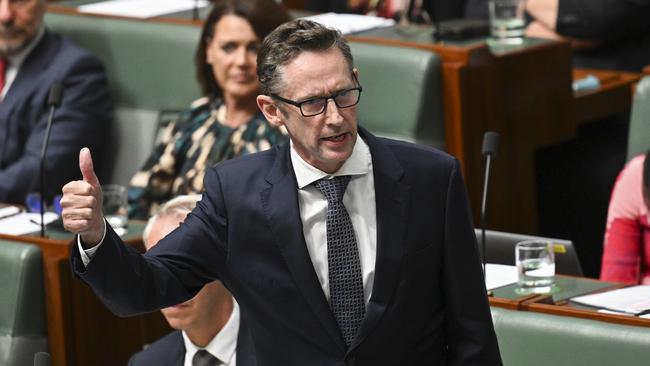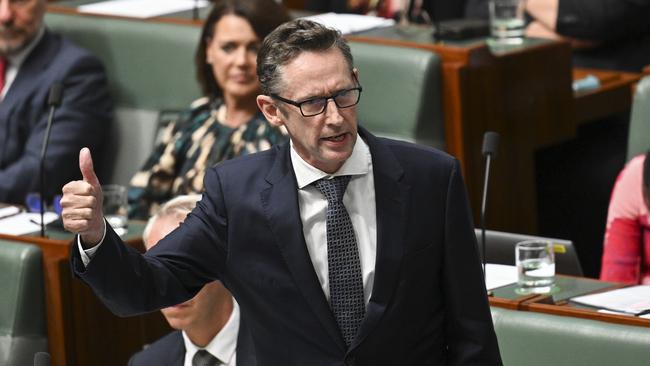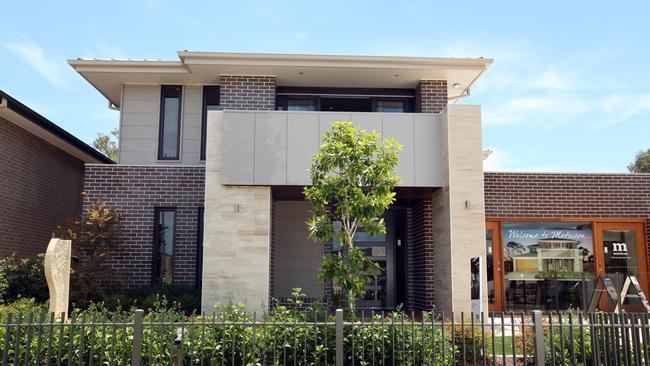
On the desk of Assistant Treasurer Stephen Jones are badly researched wholesale investor recommendations that will slash the pool of capital providers to this growth sector and do great damage to both the fabric of the ASX and the wider capital market for non-ASX companies.
I emphasise that Jones has made it clear that no decision is imminent on the future definition of wholesale investors. The nation can be grateful, but the danger remains.

I first wrote about this danger last month pointing out that 1400 listed companies, or 60 per cent of the stocks on the ASX, were vulnerable to those reports that did not investigate the impacts of what they were recommending.
I have since done extra research and therefore would like to submit my conclusions to the Assistant Treasurer.
Currently, unless you are a wholesale investor, there are strict curbs on how much you can subscribe to equity in listed and unlisted securities unless they issue a monumental prospectus. Few major institutions invest widely in the medium-sized enterprise space.
Non-institutional capital must therefore come from wholesale investors. To be a wholesale investor, a person must have net assets of more than $2.5m including the family home or an income for two years at or above 250,000.
Those figures have not changed for many years and a rise in the value of the family home has obviously greatly expanded the number of wholesale investors, which has helped vast numbers of enterprises while not causing rort epidemics.
There is also a vague provision for people with certain qualifications to be wholesale investors.
Some of the reports say that the wholesale investor net asset limit should be increased to $4.5m or $5m including the family home. There are also recommendations of introducing a crippling assets test that excludes the family home.
Here are my suggestions:
There should be no limits on the ability of people to subscribe to ASX new share issues. Currently, a person can buy any quantity of listed shares on every trading day of the week, except when the company is raising capital. Then there are severe restrictions placed on non-wholesale or so-called retail investors.
To have a person able to buy shares on the market without restrictions but then have restrictions placed when they want to subscribe to a listed equity issue is ludicrous given they can buy those same shares the next day.
That exclusion will take the pressure off the 1,400 listed companies with market capitalisation below $100m.
The ASX disclosure rules, particularly at the time of a capital raising, provide the required investor protection.
However, in the non-listed space there is a widely held belief among those that have or are raising capital that, unlike the ASX securities, there should be a requirement as to financial wealth to curb fraudulent operations. But no limit will stop big losses when there are fundamental reverses in a sector like that which took place in the building industry.
I subscribe to the general view that a limit of $3m in net assets including the family home would not hinder the current market and would create a barrier against some of the frauds of previous decades.
While that limit might be indexed (and the past limits grandfathered) any limit that is markedly higher will make it extremely difficult for non-listed companies to raise money and will force them into private equity or, more likely, to shut down or not start.
The cost to the nation of what would be only slightly higher protection using big asset limits comes at the cost of employment and national prosperity.
An alternative limit of $1m on net assets excluding the family home would also be workable but creates great unfairness.
In today’s world, particularly among affluent people, there are often couple splits where one party takes the house (usually the female) and the other most of the remaining assets.
Those females that take the family home are being excluded from the non-listed capital market, which many use with their friends in a similar situation to restore their level of wealth.
At the same time because the family home is tax-free many people have invested heavily in their family home and any assets test that excludes the family home differentiates between people on the basis of how they invested their money rather than total net assets. And the test based on net assets after deducting mortgages etc.

We also need to look at the current test based on abilities. Many emerging companies come from friends who want to invest on the basis of their ability to assess projects, not their accumulated assets.
Accordingly, there should also be a much more specific set of qualifications like a university degree and or work experience qualifications that enable a person to be classed as a wholesale investor without a high assets bar.
The government quite rightly is concerned that the economy is being dominated by the power of relatively few corporations with large asset accumulation. The best way to reduce that trend is to encourage the development of new enterprises, often based on new technologies which the incumbent companies are reluctant to embrace
One of the great problems any minister has in obtaining advice in this area is that there is not a great deal of expertise on smaller companies. It would be better to leave the current limits where they are for non ASX listed companies than to make wholesale changes which will force Australia’s best ideas to either remain dormant or move into the hands of private equity and or overseas groups.






Many thousands of Australian medium-sized companies – including 60 per cent of the stocks listed on the ASX – are now on edge, fearing that the government will take away their source of capital – Australia’s so-called “wholesale investors”.